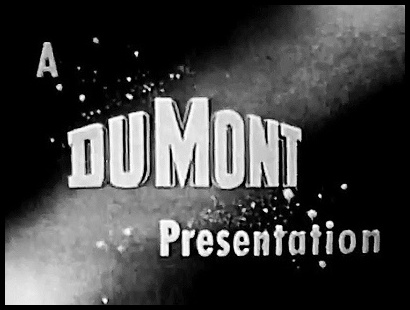

August 6, 1956…The DuMont Network Goes Dark
August 6, 1956…The DuMont Network Goes Dark
In furthering television on a technical basis, DuMont brought a lot to the game, but financially, it had always been an uphill battle. Their deal with Paramount was always a problem, and without radio properties, they had no leverage with AT&T. At the link is the story of the final years. http://www.dumontnetwork.com/7.html
In a nutshell, here is how DuMont began to dismantle its network operations. On April 1, 1955, many of the entertainment programs on the network (including “Captain Video”, DuMont’s longest-running show) were dropped. Bishop Fulton J. Sheen’s last program aired a few weeks later, on April 26 (he would soon move to ABC).
By May, only eight shows remained on the DuMont network, and the AT&T coaxial-cable interconnection to DuMont affiliates in other cities was cancelled. Inexpensive programs like “It’s Alec Templeton Time” sustained what was left of the network during the summer months. A panel show called “What’s the Story” was the last regularly scheduled non-sports program on DuMont, with its final airing on September 23, 1955.
After that date, DuMont reserved its “live” network feed for occasional sporting events. The last program of any kind on the DuMont Television Network was “Boxing from St. Nicholas Arena”, with Chris Schenkel on August 6, 1956, although this show continued locally on WABD in New York City. -Bobby Ellerbee
Great site. We had a DuMont TV, so we watched the DuMont on a DuMont. Didn’t notice it on the site, but the great baseball director Harry Coyle got his career start at DuMont starting in 1947 through 1955 before leaving for NBC full time.
Can you clarify the apparent discrepancy between AT&T dropping the connection to DuMont affiliates in May 1955, and DuMont still having a “live” network feed until August 1956? Thanks!
What became of the Telecenter?
My father worked for AT&T / Long Lines. When DuMont came up, he fondly remembered their show “The Bickersons “.
And away it went . . .
Fascinating. I love the history of television and this stuff can keep me glued to the Internet for hours!
Ad for DuMont’s Electronicam:
I started my career working at WNEW-TV (67th St, NYC) for a brief period of time in 1980. On the 2nd floor we had what was called “Monitor Heaven” which was where all old and outdated monitors were sent to die. That space was an old Dumont studio with racks of old equipment spammed with the Dumont label as well as an old video switcher and some audio gear. There was an audio mixer with giant knobs instead of the small nimble faders we have today. I had the pleasure of working with Bob McNally (there were two of them as Bob’s son Bob Jr. also worked there) who was an audio engineer. Bob Sr. evidentially was the audio engineer on the original Ernie Kovacs show before if left Dumont for ABC. The building had a large freight elevator that would take Cadillac automobiles up to the 5th floor to record Potamkin Cadillac commercials. It was fun working at such a historical broadcast facility.
I purchased a book decades ago that told the history of ABC. I don’t think it was the one written by Goldenson but not sure. Seems like ABC was spawned from the government-forced sale of Loews movie theaters. That left them with a bundle of cash and television seemed like a good idea. NBC had the Red & Blue radio networks and due to further antitrust decisions, ABC bought Blue which evolved into TV.
I remember the day when DuMont programming ended on WTTG in Washington. I think I was in the sixth grade at the time.
And here’s a Dumont color Test Pattern, though I don’t know it’s history, and whether Dumont had contemplated color-casting of its own.
The ‘Manchu’ with it’s oriental doors open.
The type of high quality TV Dumont produced, The ‘Manchu’.
excellent thanks for the history lesson
My father, a jazz drummer, told me of appearing on the summer replacement series for Cavalcade of Comedy, called Cavalcade of Rhythm. He said he was with the Buddy Morrow Orchestra and he remembered being on a circular stage that revolved from one band to the next. It had to be the early 50s, and I’ve heard that some kines survive, but I’ve never seen one. Of course it’s a sort of Holy Grail to find the one with my father, who is long gone.
What a crappy headstone for a man such as Dumont. He should have a granite TV with his name etched on the screen with the words Television Pioneer.